
STILL THINKING 3D PRINTING IS JUST FOR PROTOTYPING?
IT’S TIME TO STOP. HERE’S 5 REASONS WHY.
When you read “3D printing,” what immediately comes to mind? If you thought “prototyping,” you are not alone – many people think of prototyping. Together, we can correct this stereotype and you can start appreciating (and taking advantage of) 3D printing for its myriad uses. Sure, many years ago 3D printing was primarily used for prototyping, but it’s no longer 1992 when the world’s first SLA machine was invented. In technology years (as opposed to dog years), it has been 1000 years and 3D printing technology has advanced. You can print complex shapes in a variety of materials. 3D printing is so advanced that a group of engineers at the University of Southampton developed and flew a 3D-printed aircraft!
I give you five easy ways 3D printing can be used beyond prototyping to save money and time in product development.
1: FIXTURES & GAUGES
Today, most well-designed products aren’t a simple box housing technology, especially within the consumer product or medical device industries. Today, products have organic forms with flowing lines and ergonomic shapes and features. They are aesthetically pleasing and user-centered, but they also can be difficult to position within an inspection or manufacturing fixture.
The curved forms make it difficult to position the part or assembly in a defined orientation or location. Enter 3D printing. A 3D printer can create a customized fixture that will perfectly hold that organic form.
- Need to position a badge or label on a complex surface? Print a fixture that matches the surface and perfectly positions the badge exactly where you want it.
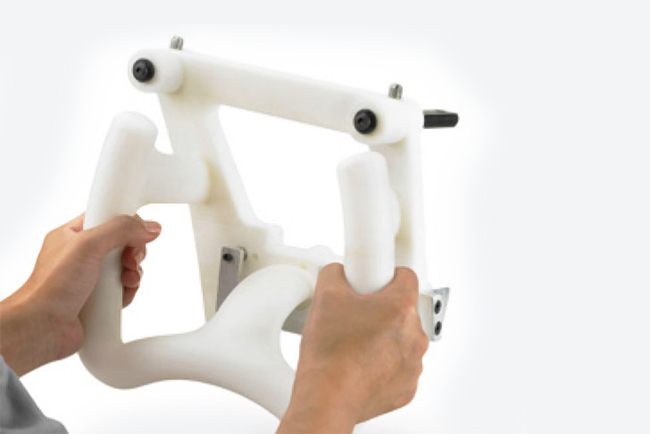
Placing a badge or label on a complex surface is no longer difficult thanks to 3D printing.
- Need to install thread inserts in a complex part? Print a fixture (e.g. a custom jig) that holds the part at just the right angle and position.
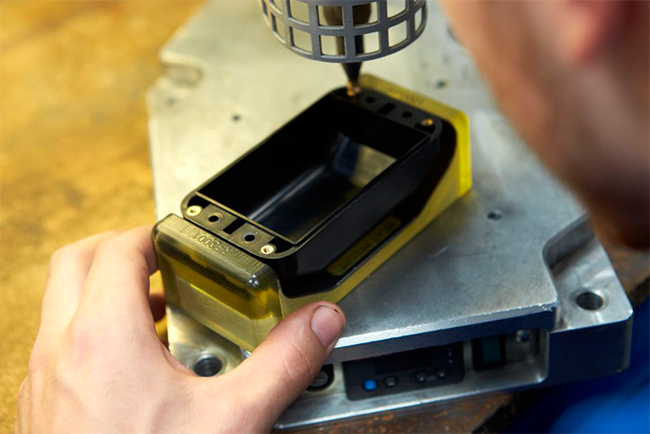
3D print a custom fixture to help install custom threads on a complex part.
- Need to inspect a complex form to make sure it conforms to specs? Print a fixture (e.g. a custom gauge) to hold the part while measuring it.
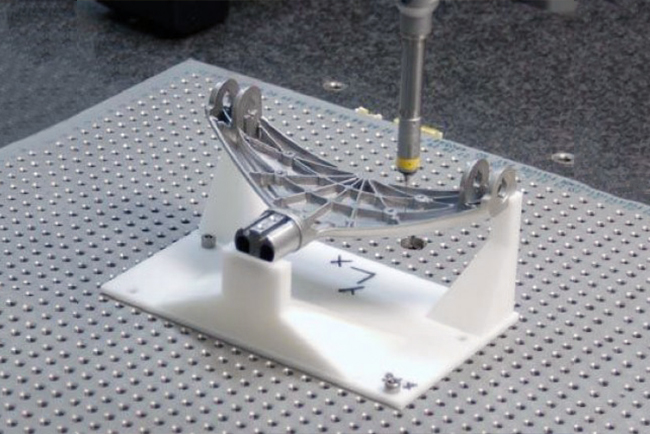
Inspecting complex parts is a snap with a 3D printed fixture.
2: MOLDS (INJECTION MOLD, METAL INJECTION MOLD, BLOW MOLD)
3D printers and the feedstocks available for making prototypes have come a long way since they were first introduced, but sometimes you still need molded prototypes made from production grade materials. Rather than spending large amounts of money and weeks of time creating a mold using traditional methods, you can 3D print one. With advances in materials and machine resolution, you have the option to 3D print a short-use mold for applications like injection molding, blow molding and even metal injection molding (MIM). These molds aren’t going to crank out a thousand parts, but you likely can get a few dozen with the right material – and sometimes that is all you need to produce proper prototypes for evaluation.
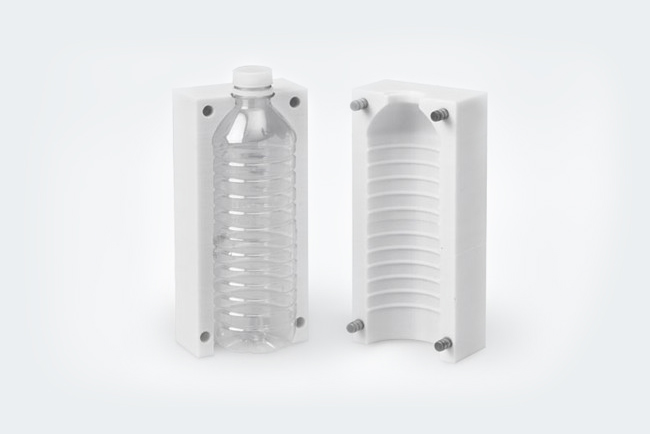
With advances in materials and machine resolution, you have the option to 3D print a short-use mold for applications like injection molding, blow molding (pictured) and even metal injection molding.

3D printed molds (like the injection mold tool shown here) aren’t going to crank out a thousand parts, but you likely can get a few dozen with the right material – and sometimes that is all you need to produce proper prototypes for evaluation.
3: CUSTOM TOOLS
Sometimes you just don’t have the right tool for the job, or maybe it doesn’t even exist. Why not print it? Advances in materials and processes for 3D printers allow for much stronger parts and more complex geometry. Imagine quickly creating a wrench custom-designed to reach an otherwise inaccessible fastener.
3D printers allow for the creation of tools that could not be made with any other process.
The International Space Station uses a 3D printer for making tools on demand – saving money and time. Instead of sending a physical tool to the Space Station, earth-bound engineers can send digital design files for the tools to be printed in space. 3D Printers will become increasingly critical as astronauts travel farther from earth; they will allow the crew to create their own tools and parts.
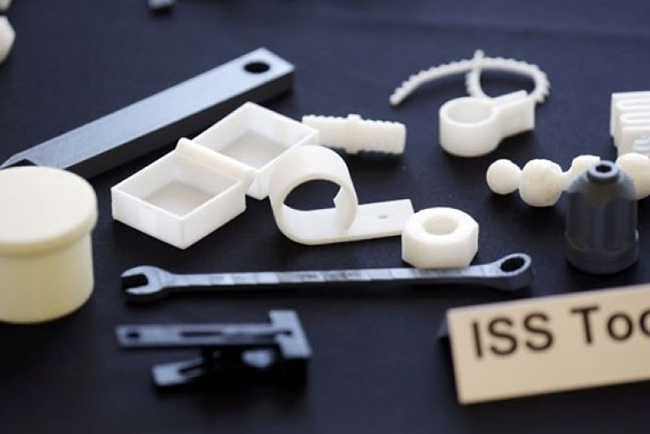
The International Space Station uses a 3D printer for making tools on demand.
4: MAKING “ONE” OF SOMETHING
“Making one of something?” you cry. “How is this different than prototyping?” Relax. I am simply referring to situations where you really only need one part or product (or a very low quantity) and the cost of making tooling for such a low volume of goods doesn’t make financial sense. Again, 3D printing to the rescue!
Jay Leno’s collection of cars is legendary and includes many rare antiques. When no replacement parts are available for repairs, Jay turns to his own 3D scanner and printer. The original part is scanned and any irregularities or gaps are smoothed out using software. The printer then makes an exact copy in plastic. A big advantage over simply giving the job to a machinist is that the part can be tested first to make certain it fits. When it’s ready, the plastic part can be used to make a mold, given to a machinist to copy, or the output file can be fed directly to a CNC machine to make the metal part.
At bb7 we held an internal Foosball tournament for which we needed a trophy. No ordinary trophy would do; we needed a trophy that truly matched the excellence of the winner. The cost of a custom trophy? Sadly out of budget. The solution? You guessed it! We designed one ourselves and printed it using one of our 3D printers. We couldn’t have machined this (and even if we could, it would have been expensive).
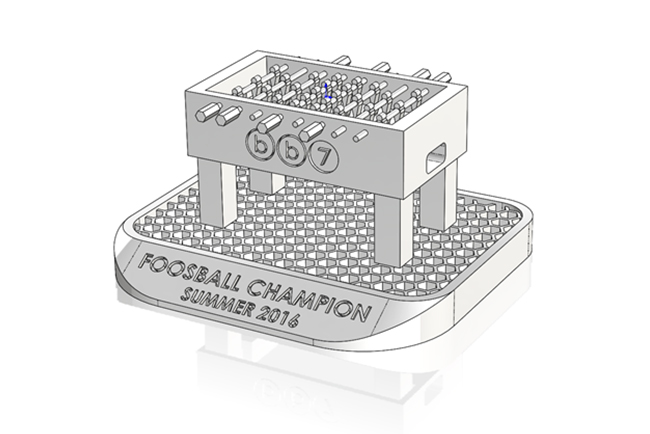
bb7 designed a custom trophy and printed it using one of our 3D printers.
5: MANUFACTURING
Manufactured parts is one of the fastest growing uses for 3D printing technologies. Advances in materials, printer resolution and speed have all allowed for using 3D printers to create parts for use in end products.
The aerospace industry has been using 3D printers for over a decade. Many companies like Boeing, Lockheed Martin and BAE Systems are currently using 3D printed parts in everything from commercial airliners to fighter jets to satellite systems. Direct Metal Laster Sintering (DMLS) processes allow for these companies to make low weight and high strength parts that, due to complexity, could not be made using any other process.
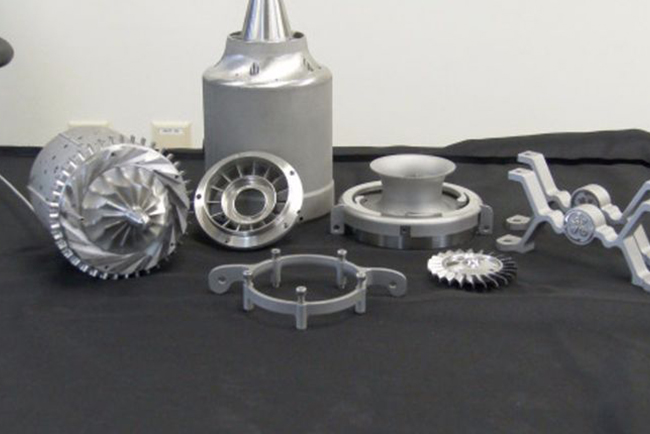
Manufactured parts is one of the fastest growing uses for 3D printing technologies.
Another advantage of 3D printing is that it allows an engineer to combine parts that would have had to be formed separately if they were made using traditional manufacturing processes. The example below shows a creative use of 3D printing to combine parts and make something that could not be made using any other process. And, thank goodness it was made! I am unsure how we ever existed in a world without Tyrannosaurus Rex shower heads.
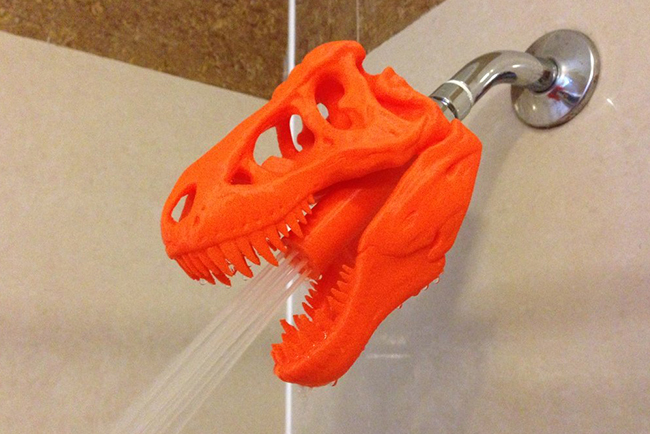
A creative use of 3D printing that combines parts to make something that could not be made using any other process.
In addition, 3D printing allows for design iterations and customization to take place during “production.” Since there is no tooling and the machine can be re-programmed with a new design anytime there is an update, it gives designers and engineers the ultimate in flexibility.
3D Printing: The Sky’s the limit
3D printing is for much more than prototyping. From fixtures and gauges to manufacturing, the many uses of 3D printing allow businesses to save time and money while permitting more development flexibility. More uses are being tested daily and, as the technology advances, the sky is literally the limit on where else it can be used.